09 Must Try Buenos Aires Food for an Authentic Experience !!!
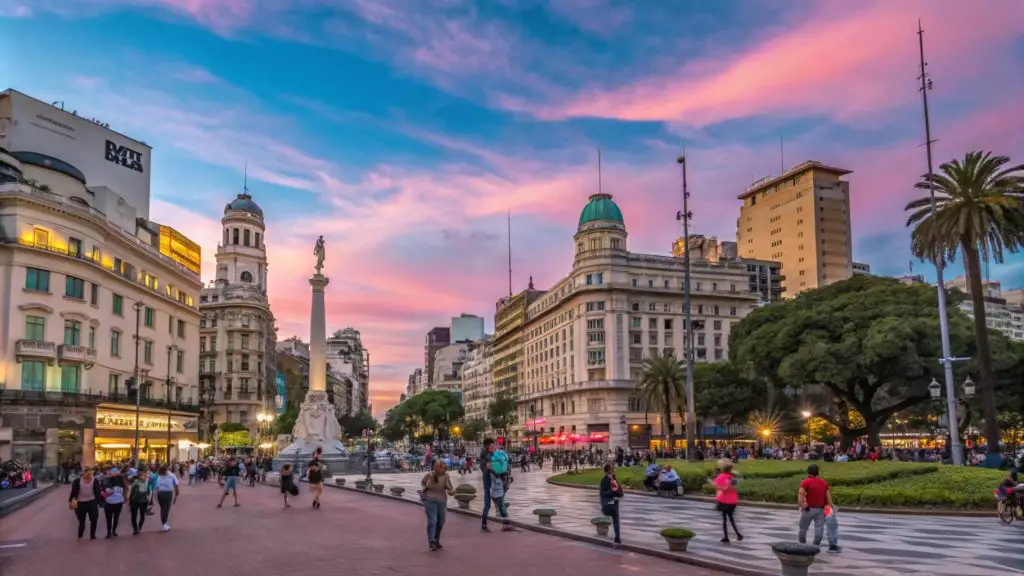
Buenos Aires is the heart of Argentina, sitting on the western shore of the Río de la Plata. This lively city blends nature and urban life perfectly. You’ll find tree-lined streets, wide boulevards, and sprawling parks in every neighborhood. The city’s location gives it a mild climate, making it enjoyable to explore all year. Nearby, the vast Pampas stretch out, a reminder of Argentina’s farming roots. Its rivers and coastlines also add to its charm, offering peaceful escapes just outside the bustling city. Also Buenos Aires food considered as must try cuisine for every traveller who visits.
The people of Buenos Aires, known as Portenos, are proud of their rich heritage. This city breathes art, music, and dance, reflecting its European influence and Latin American soul. You’ll feel the passion in every street performance and hear it in every lively conversation. Portenos are known for their friendliness, always ready to share stories and welcome visitors. The city thrives with cultural events, from theater shows to colorful festivals. Every corner feels alive, offering endless chances to connect with its vibrant spirit.
Buenos Aires food tells a story of tradition, family, and flavor. Its dishes often highlight fresh, local ingredients prepared with care. Meals here are not just about eating—they are moments to bond and celebrate life. The city’s food scene reflects its diverse history, blending influences from Italy, Spain, and indigenous cultures. Travelers should make time to savor the local cuisine because it’s a journey through taste that captures the soul of Argentina. Dining here feels like an adventure that you’ll remember forever.
Asado: A Feast for the Senses
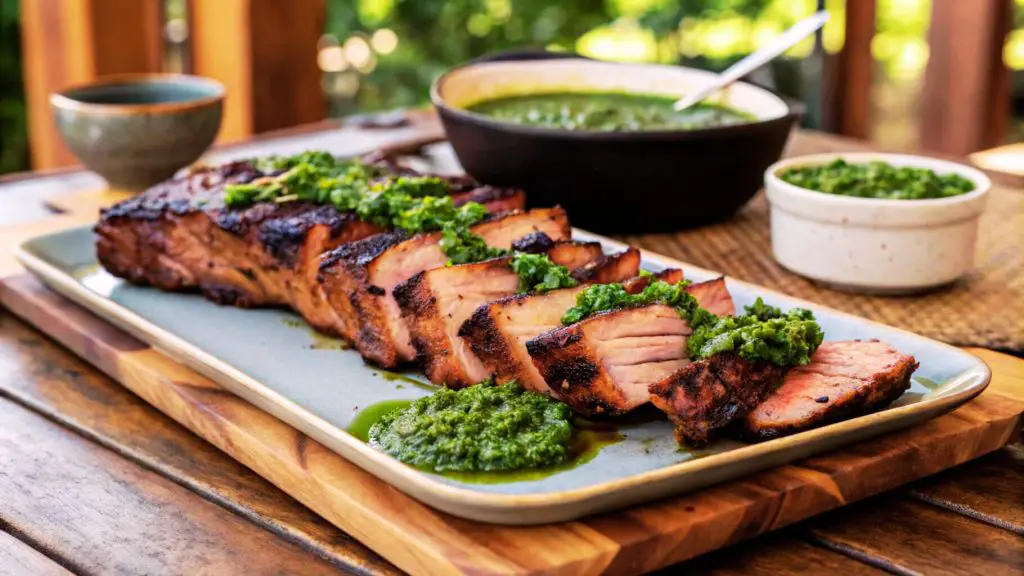
Asado is more than just grilled meat. It is a symbol of Buenos Aires’s vibrant culture and a way of life. People in Buenos Aires enjoy it not only for the flavor but for the experience it brings. Asado is about family, friends, and tradition. It’s cooked over an open flame or hot coals, giving the meat a smoky, rich taste that’s hard to forget. The cuts of meat are tender, juicy, and cooked to perfection.
Chimichurri sauce is the perfect partner to asado. It’s fresh, tangy, and loaded with herbs. Made with parsley, garlic, oregano, olive oil, and a touch of vinegar, it adds a zesty flavor that balances the richness of the meat. Every bite feels satisfying and full of life.
What Makes Asado Special?
- Cooking Style: Asado is cooked slowly on a grill, or “parrilla,” or sometimes a firepit. This slow cooking keeps the meat soft and flavorful. You might see a whole animal, like a lamb or pig, cooked over an open flame in a traditional asado. It’s not just cooking; it’s art.
- Variety of Meats: Beef is the star, but you’ll also find pork, chicken, and even chorizo (a type of sausage). Some asados also include morcilla (blood sausage) or sweetbreads for those who love adventurous flavors.
- Social Ritual: Asado isn’t eaten in a hurry. People gather for hours, enjoying drinks, conversation, and the process of grilling. It’s a way to connect and celebrate.
Where to Try Asado in Buenos Aires
Buenos Aires is the heart of asado culture. If you visit, there are many places where you can enjoy this traditional meal
Don Julio
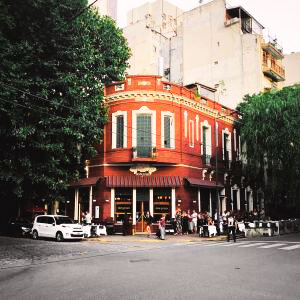
Located in Palermo, Don Julio is one of the most famous steakhouses in the city. The meat is high-quality, cooked just the way you like it, and served with love. Prices range from 8,000 ARS (USD7.94) to 12,000 ARS(USD11.9) per person, including sides and wine.
Website: Don Julio
La Cabrera
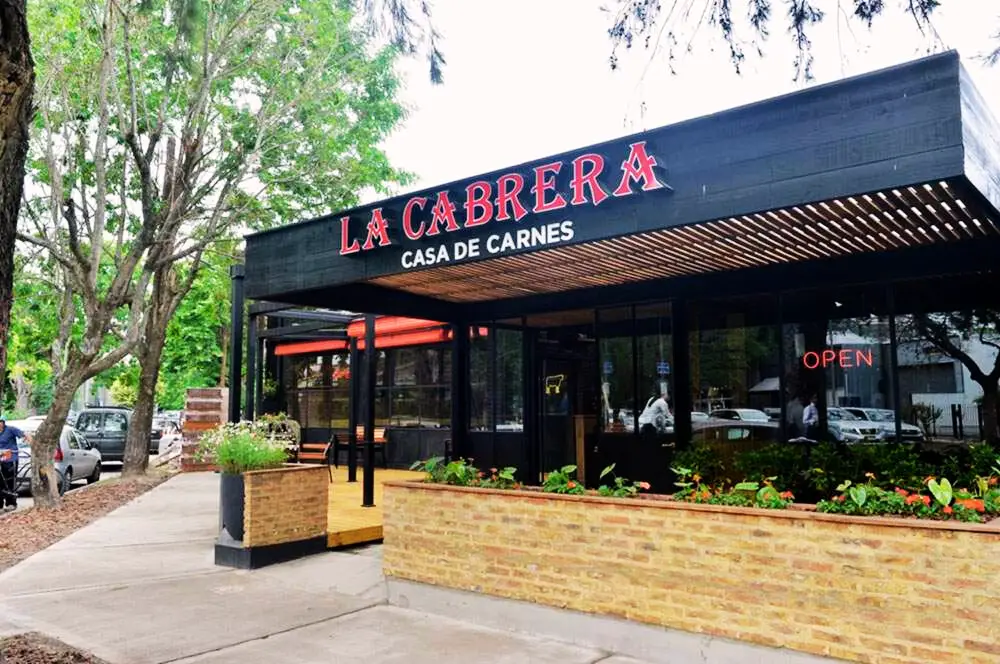
This spot offers generous portions and a vibrant atmosphere. The meat melts in your mouth, and the chimichurri is unforgettable. A meal here costs between 6,000 ARS(USD5.95) and 10,000 ARS(USD9.92).
Website: La Cabrera
Cabaña Las Lilas
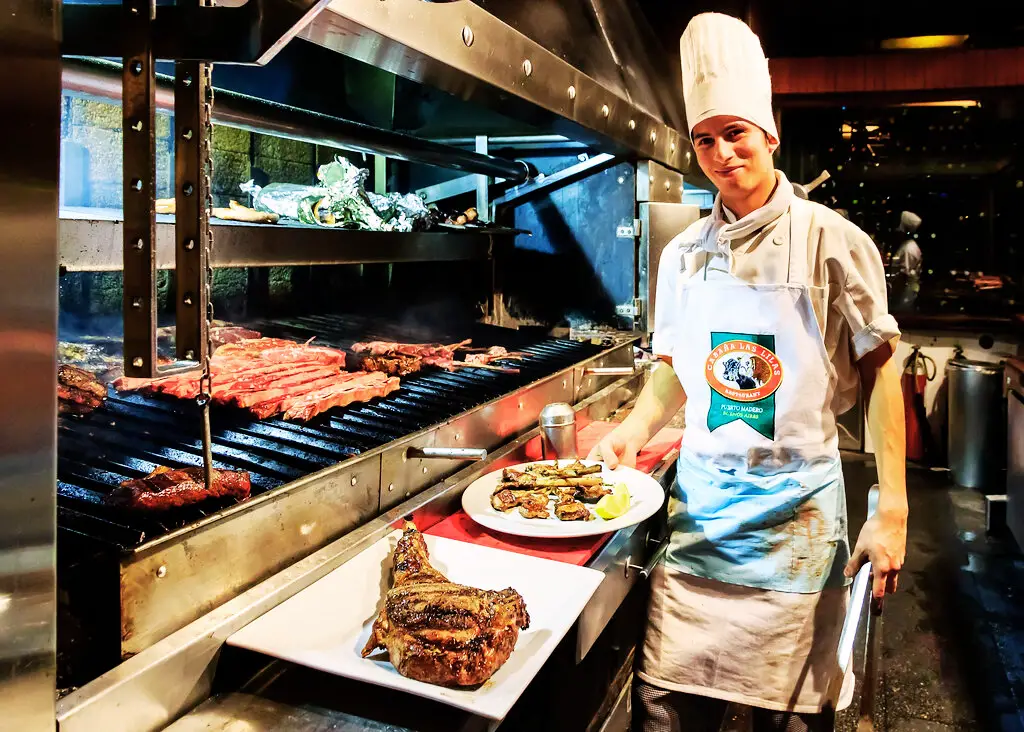
Found in Puerto Madero, this is a more upscale choice. They focus on premium cuts and pair the meal with excellent wines. Expect to spend 10,000 ARS(USD 9,92) to 15,000 ARS(USD14.89) per person.
Website: Cabaña Las Lilas
El Ferroviario
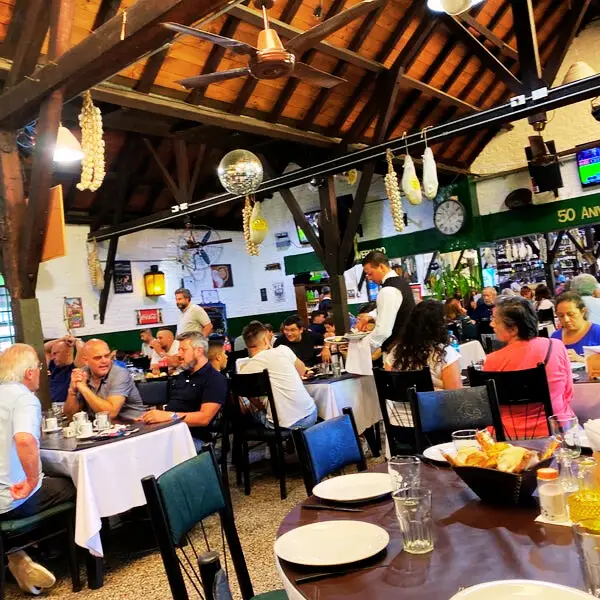
For a more local vibe, this hidden gem is a great choice. It’s affordable, with meals priced between 4,000 ARS(USD3.97) and 6,000 ARS(USD5.95). The flavors are authentic and the portions are generous.
Variations of Asado
Every asado is unique, and there are regional twists
- Parrilla Style

Meat is grilled over hot coals. It’s the most common and loved way
- Al Asador

The meat is skewered and cooked vertically next to an open fire. This method is common in rural areas and gives the meat a unique smoky flavor
- Vegetarian Options

Some places now offer grilled vegetables or cheese as part of the asado tradition
Whether you enjoy it in a top-notch restaurant or at a friend’s backyard gathering, asado is an experience that stays with you. It’s not just food—it’s Buenos Aires on a plate.
Empanadas: A Pocket of Pure Joy
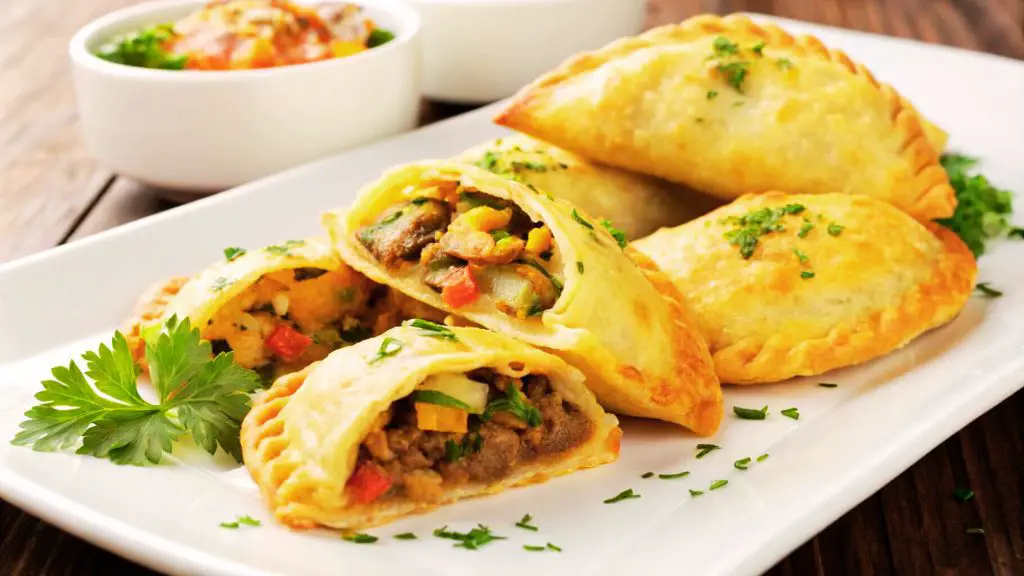
Empanadas are a beloved snack in Buenos Aires. They are small, folded pastries filled with delicious ingredients like seasoned meat, melted cheese, or fresh vegetables. You can find them baked or fried, but the fried ones are especially crispy and satisfying. Each bite is an explosion of flavor. They are not just food but a part of life in Argentina. Empanadas bring people together at family gatherings, festivals, or even casual meals with friends.
Argentinians take pride in their empanadas. Every region in the country has its own style, but Buenos Aires is known for making some of the best. People love how portable and convenient they are. You don’t need a fork or knife—just grab one, take a bite, and enjoy.
Why Empanadas Are Loved
- Flawless Dough: The pastry is soft yet slightly crispy, holding all the delicious fillings inside. It’s thin enough to let the flavors shine but sturdy enough not to break.
- Tasty Fillings: From minced beef to ham and cheese, there’s something for everyone. The beef empanadas often include onions, olives, and hard-boiled eggs for extra flavor.
- Traditional Craftsmanship: Each empanada is sealed with a hand-folded twist called “repulgue,” showing the care and history behind every piece.
Where to Savor Empanadas in Buenos Aires
Buenos Aires is the ultimate destination for empanada fans. Here are some places you must visit
El Sanjuanino
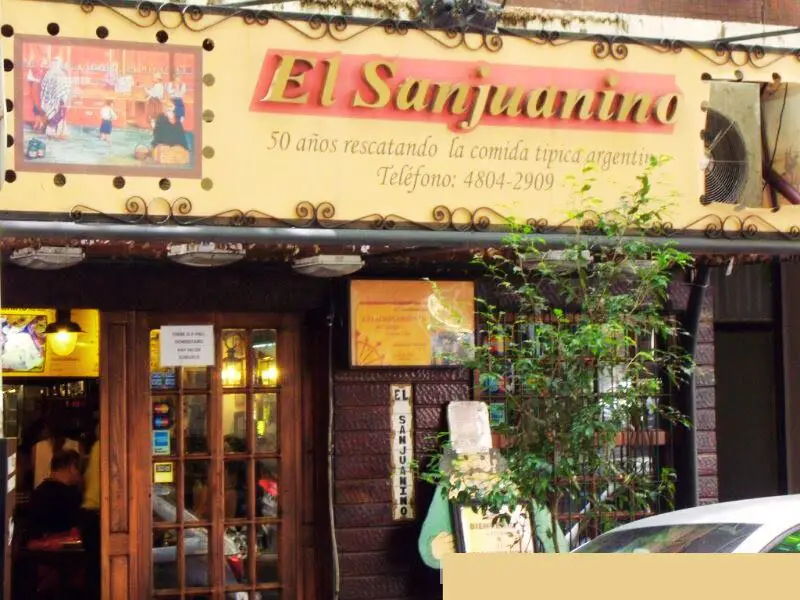
A charming spot that serves empanadas inspired by San Juan’s rich flavors. Their beef empanadas are perfectly seasoned and baked to golden perfection. Prices are between 600 ARS and 1,000 ARS per empanada
Website: El Sanjuanino
La Americana
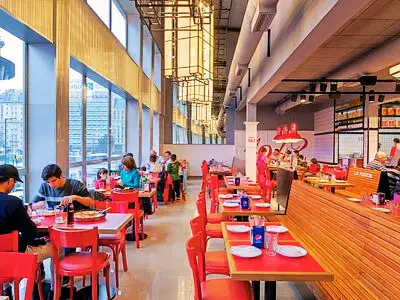
Known for hearty and affordable empanadas, this classic eatery has something for everyone. The ham and cheese empanadas are a must-try. Each costs about 500 ARS
Website: La Americana
Pachamama
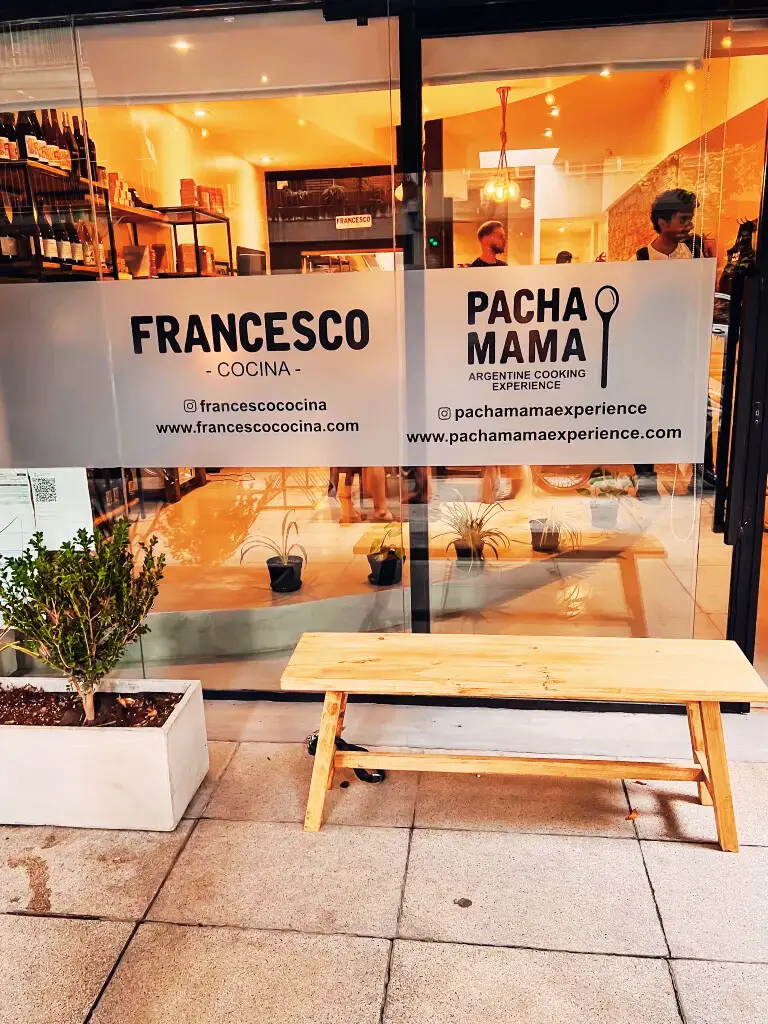
A creative spot in Palermo offering gourmet empanadas. Try the lamb with mint or roasted vegetable fillings. Prices range from 900 ARS to 1,200 ARS
La Querencia
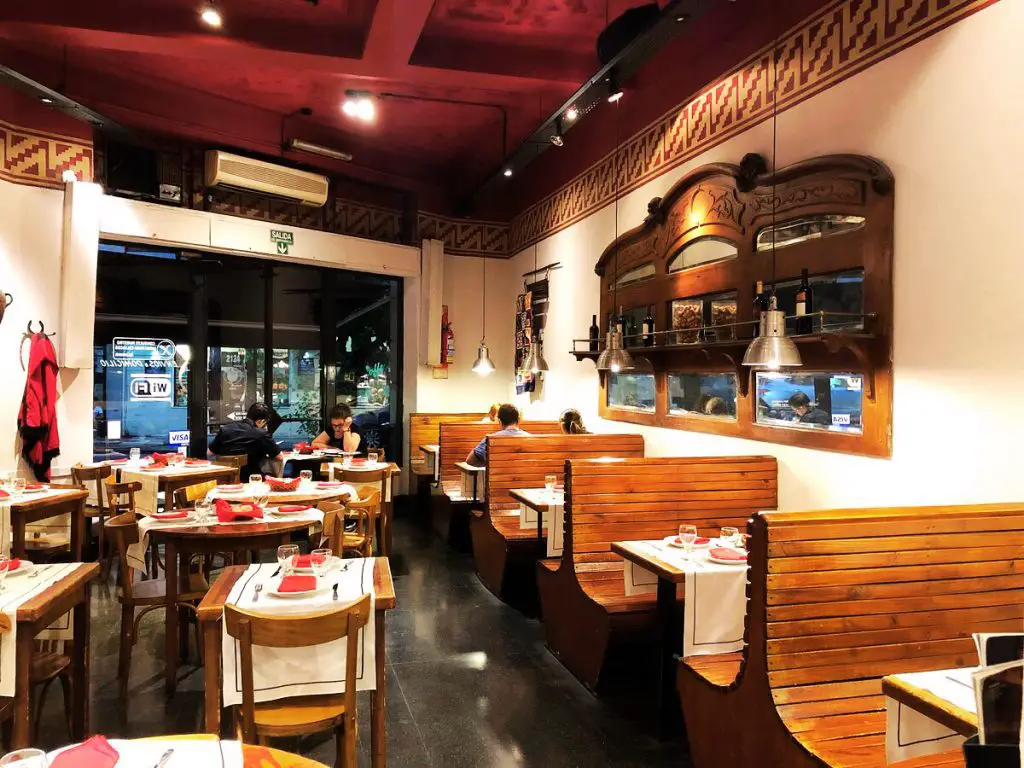
This laid-back eatery serves authentic flavors. Their chicken empanadas are tender and well-seasoned. Expect to pay between 700 ARS and 900 ARS per piece
Endless Ways to Enjoy Empanadas
Oven-Baked Favorites
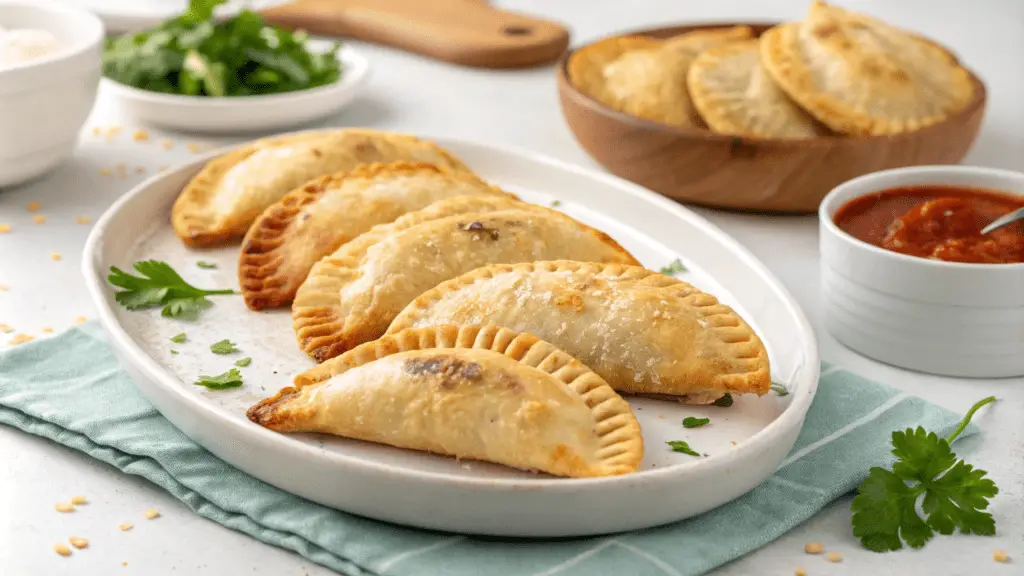
Light and flaky, baked empanadas are perfect for those who prefer less grease
Crispy Fried Delights
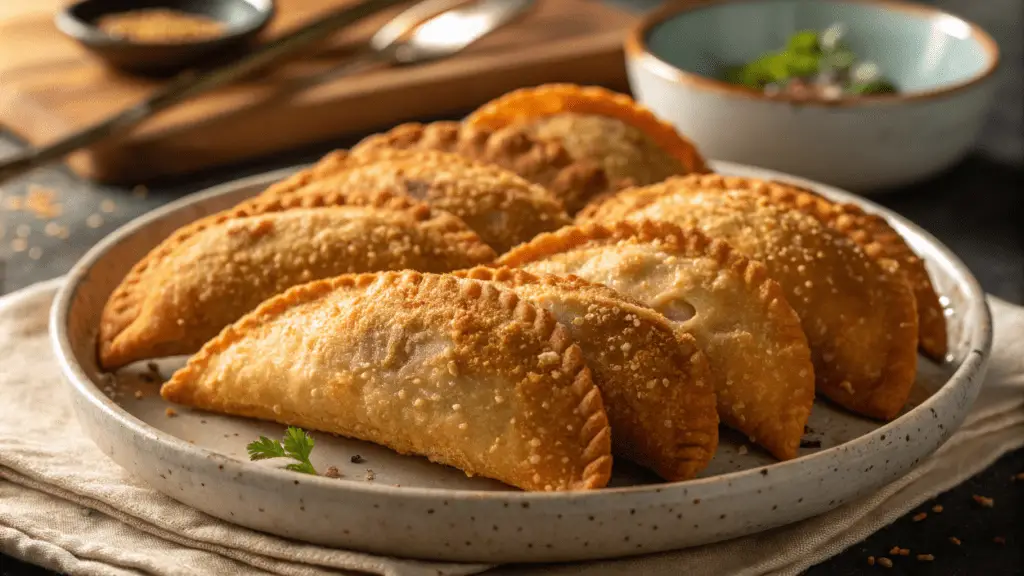
Fried empanadas are indulgent and crunchy, with a golden texture
Dessert Variations
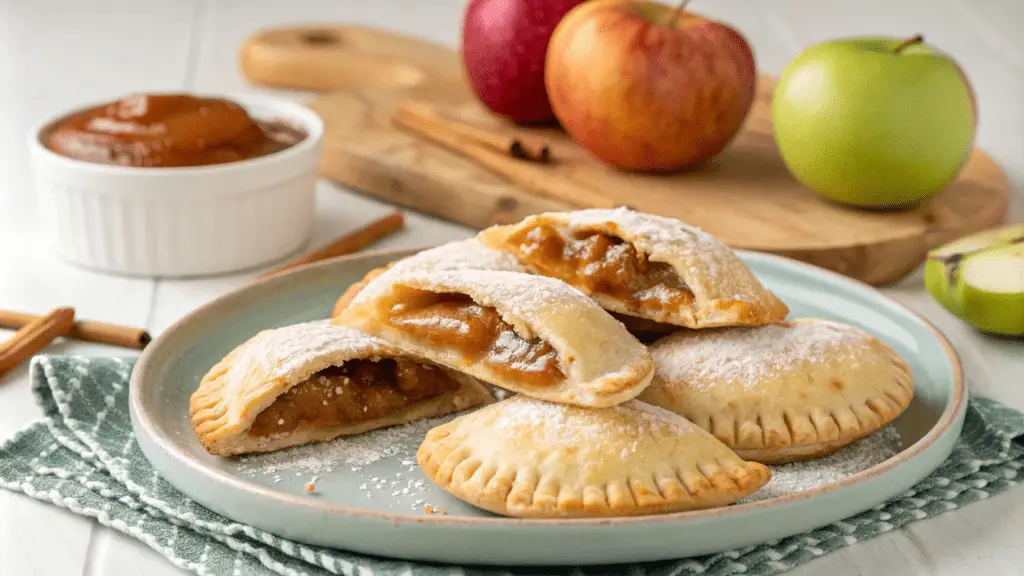
Sweet empanadas with fillings like dulce de leche or apples are a delightful treat
Regional Twists
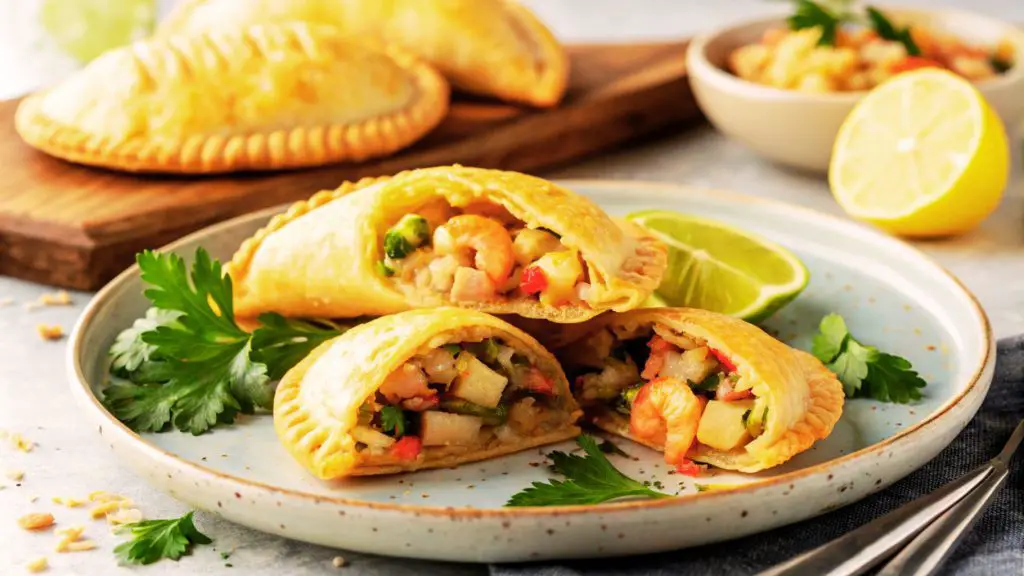
The northern regions of Argentina add potatoes and spices, while coastal areas may include seafood
Whether you enjoy them hot from the fryer or warm from the oven, each empanada is a tasty celebration of tradition and flavor.
Mate: Argentina’s Beloved Drink
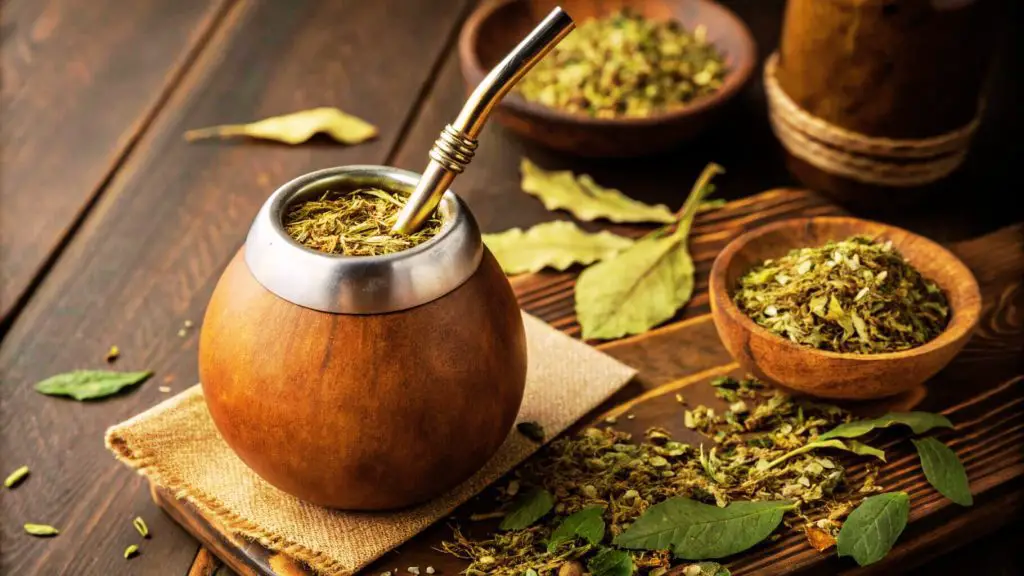
Mate is more than a drink in Argentina—it’s a way of life. This traditional beverage, made from dried yerba mate leaves, is earthy, rich, and slightly bitter. It is enjoyed from a hollowed-out gourd, called a “mate,” with a metal straw known as a “bombilla.” Mate brings people together, creating moments of connection and conversation. It’s not just about the taste—it’s about the ritual.
Argentinians drink mate at home, in parks, or even during work breaks. Sharing mate is a sign of friendship and trust. When someone passes you the mate gourd, it’s an invitation to connect.
Why Mate Is So Special
Unique Flavor
Mate has a grassy, herbal taste that becomes smoother with each refill of hot water. It’s not sweet unless sugar is added, making it a bold and authentic experience.
Health Benefits
Yerba mate is packed with antioxidants, vitamins, and natural caffeine. It gives a gentle energy boost without the jitters of coffee.
Social Tradition
Mate is meant to be shared. One person, the “cebador,” pours hot water into the gourd and passes it around. Each person drinks and returns the mate for the next refill.
Where to Experience Mate in Buenos Aires
While mate is mostly enjoyed at home, some places in Buenos Aires offer this cultural drink
Mate & Co
A trendy café in Palermo that celebrates Argentina’s love for mate. They serve traditional mate with different blends of yerba. Prices start at 1,200 ARS (USD 1.19) for a gourd of mate, with refills included
Website: Mate & Co
El Gato Negro
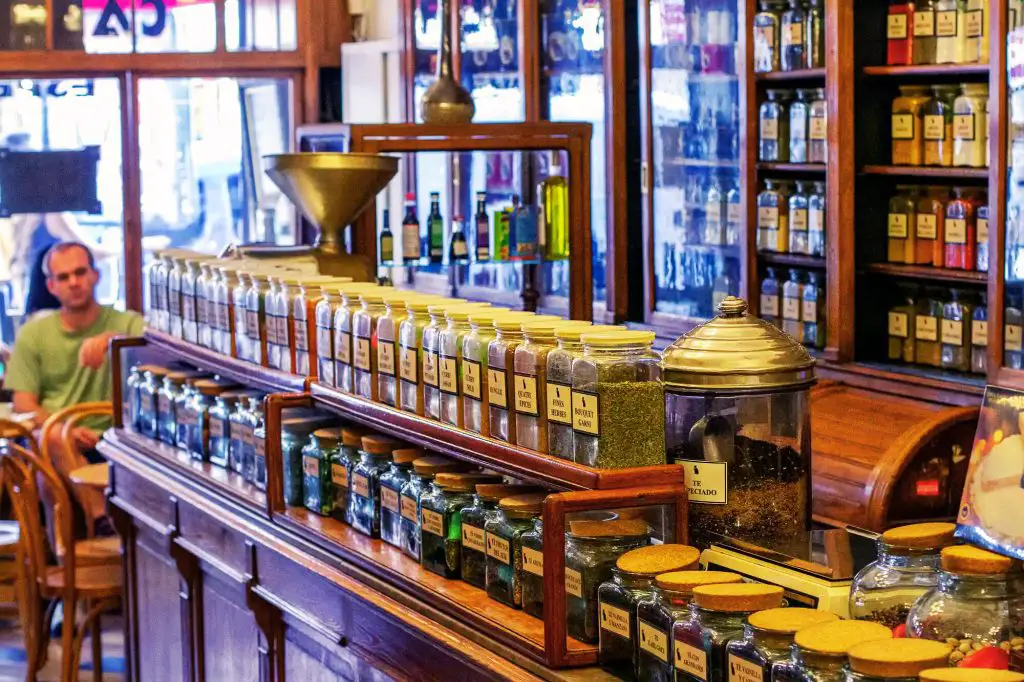
This historic tea and spice shop in the city center offers a cozy spot to enjoy mate. They also sell premium yerba mate blends to take home. Mate served here costs around 1,500 ARS (USD 1.49)
Website: El Gato Negro
La Matera Porteña
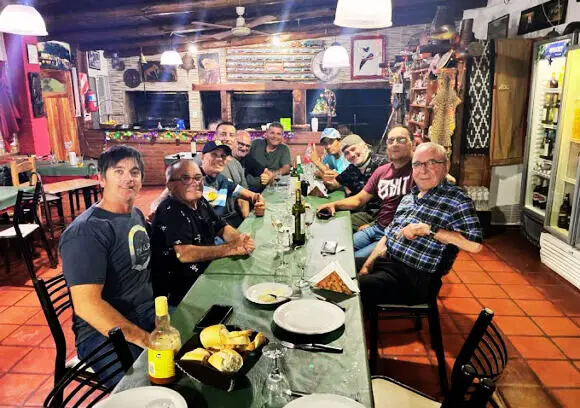
Located near San Telmo, this café offers a mate experience paired with traditional snacks like medialunas (croissants). A mate set costs 2,000 ARS(USD 1.98) and includes a variety of yerba options
Bar de Mate
A unique spot where you can taste mate in modern and traditional styles. They also offer mate lattes and sweetened versions. Prices range from 1,200 ARS(USD 1.19) to 1,800 ARS(USD 1.79)
Variations of Mate
Mate can be enjoyed in different ways to suit personal tastes
Traditional Mate
Pure yerba mate with hot water. No sugar, just bold flavors.
Sweet Mate

Some people add sugar or honey for a sweeter taste.
Terere

A refreshing cold version of mate, popular in summer. It’s served with ice water and sometimes flavored with citrus juice.
Flavored Yerba

Some blends include herbs like mint or lemon peel for an extra twist.
Mate Cocido

A tea-like preparation where yerba is steeped in hot water and served in a cup.
It’s a simple pleasure that connects people and reminds them of shared traditions. Whether you enjoy it in a bustling café or with friends in a park, mate is an experience that stays with you.
Dulce de Leche: Buenos Aires’s Sweet Treasure
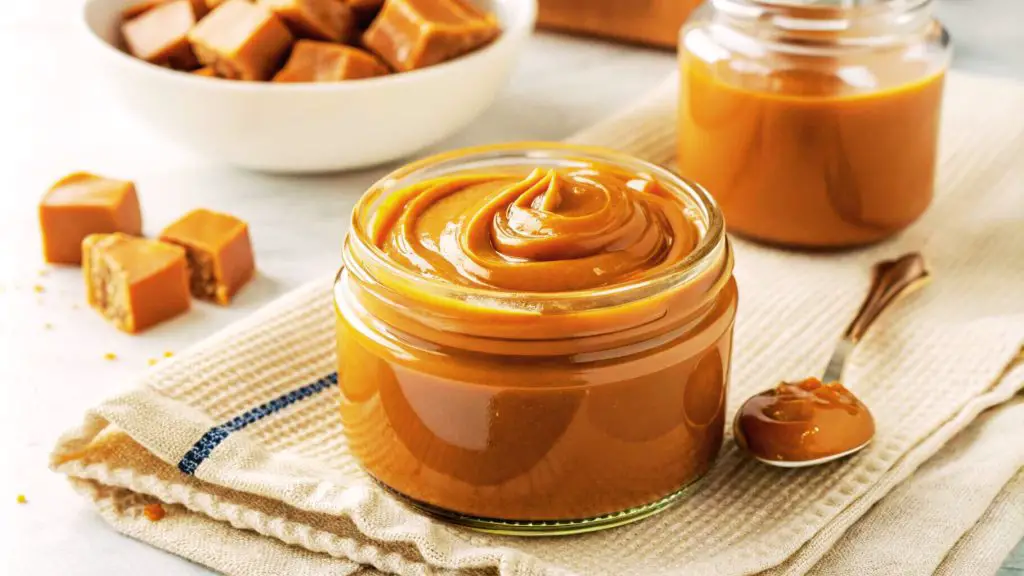
Dulce de leche is one of Argentina’s most loved treats. It’s made by slowly cooking milk and sugar until it turns into a thick, golden caramel. The result is smooth, creamy, and sweet. Its flavor is rich and comforting, with hints of vanilla and a deep caramelized taste.
In Argentina, dulce de leche is everywhere. People spread it on toast for breakfast, add it to desserts, or eat it straight from the jar. It’s a source of national pride and a symbol of sweet indulgence. Many families have their own recipes and memories tied to this beloved treat.
What Makes Dulce de Leche Special?
- Creamy Texture: The silky smoothness melts in your mouth, making it hard to resist.
- Deep Flavor: The caramelized milk gives it a unique, rich sweetness that feels homemade.
- Versatility: You can enjoy dulce de leche in countless ways—on pancakes, inside pastries, or drizzled over ice cream.
Where to Savor Dulce de Leche in Buenos Aires
Buenos Aires is the perfect city to explore the magic of dulce de leche. These spots are must-visits
El Gato Negro
A historic café in the city center where you can pair dulce de leche pastries with rich Argentine coffee. Their alfajores (cookies filled with dulce de leche) are a highlight, priced at 800 ARS each.
Website: El Gato Negro
La Pastelería del Pueblo
This bakery in Palermo serves freshly baked medialunas (croissants) filled with dulce de leche. Prices start at 700 ARS per piece. Their cakes and tarts are also worth trying.
Rapa Nui
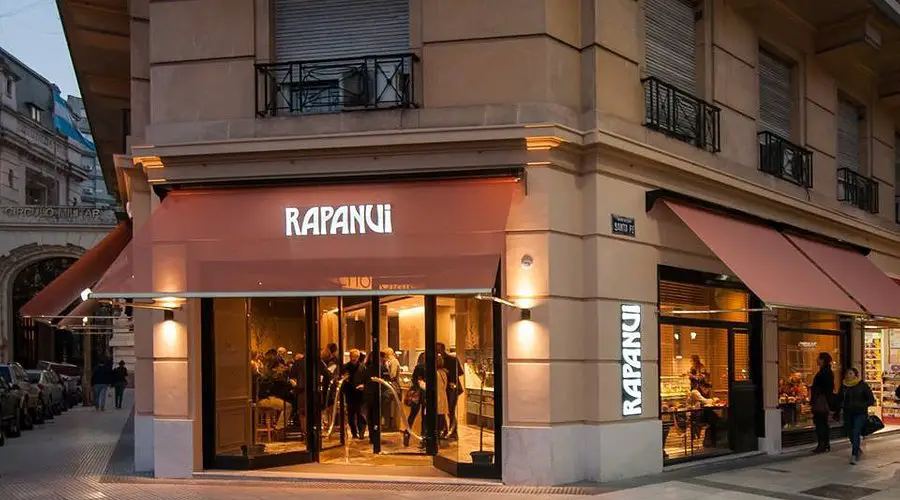
A high-end dessert shop offering dulce de leche gelato, chocolates, and traditional desserts. Prices for their gelato range from 1,000 ARS to 1,800 ARS per serving.
Website: Rapa Nui
La Casa del Dulce de Leche
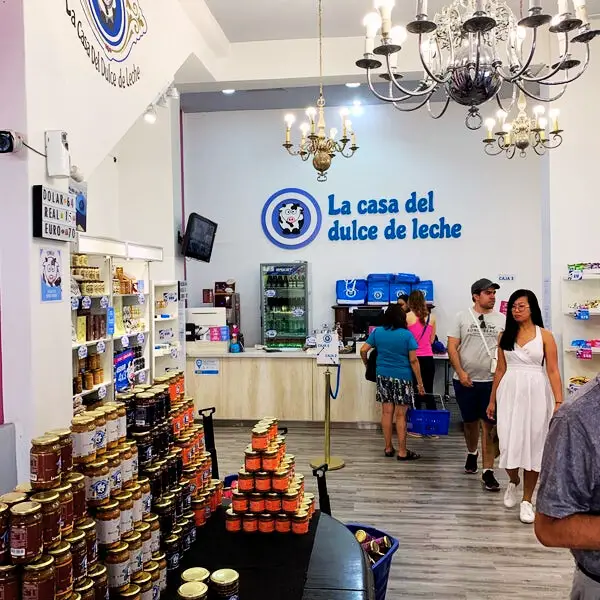
This specialty store in San Telmo sells artisanal dulce de leche jars in various flavors and textures. A small jar costs around 2,500 ARS, making it a great souvenir.
Variations of Dulce de Leche
- Classic Style
The traditional version is thick, sweet, and smooth. Perfect for spreading or eating on its own
- Dulce de Leche Repostero

A thicker version used in baking and pastries, as it holds its shape better
- Light Versions
Some shops offer low-sugar or fat-reduced dulce de leche for those who want a lighter treat
- Flavored Options
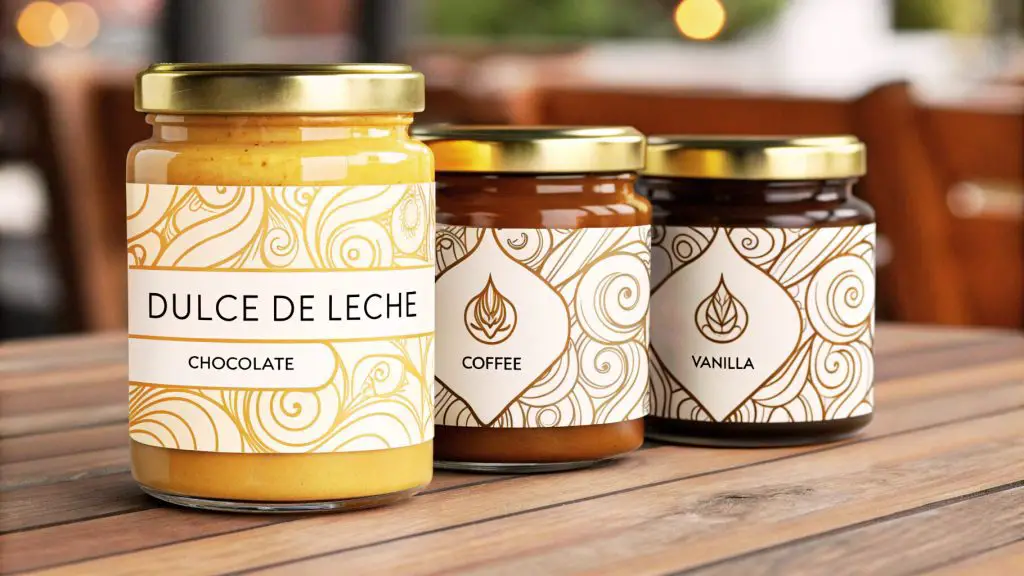
Artisanal brands add touches of chocolate, coffee, or vanilla for a creative twist
Whether you enjoy it in a dessert shop, at a café, or straight from a jar, it’s a flavor that will leave you craving more
Chorizo: A Classic Argentine Sausage

Chorizo is a star in Argentine cuisine. This flavorful sausage, usually made from pork, is seasoned with garlic, paprika, and other spices. In Argentina, it’s grilled to perfection over an open flame, giving it a smoky, juicy taste. Chorizo is more than just food here—it’s a symbol of gatherings, celebrations, and love for traditional flavors.
Argentinians often enjoy chorizo as part of an asado, the country’s famous barbecue. It’s served in various ways, but the most popular is the choripán, a simple sandwich of chorizo in crusty bread with chimichurri sauce. It’s the perfect combination of smoky, savory, and tangy flavors.
Why Chorizo Stands Out
Rich Seasoning: The spices bring out deep, savory flavors that make every bite special
Perfect Texture: Chorizo has a firm yet juicy bite that feels satisfying and hearty
Grill Marks of Perfection: When grilled, the crispy skin and smoky aroma make it irresistible.
Where to Enjoy Chorizo in Buenos Aires
Parrilla Don Julio
A famous steakhouse in Palermo known for its high-quality meats. Their chorizo is grilled to perfection and served with homemade chimichurri. Prices start at 2,800 ARS per portion.
Website: Don Julio
La Cabrera
This upscale parrilla serves juicy chorizos as part of its meat platters. It’s a great spot to experience a traditional asado. Prices range from 3,000 ARS to 3,800 ARS for a complete platter.
Website: La Cabrera
Nuestra Parrilla
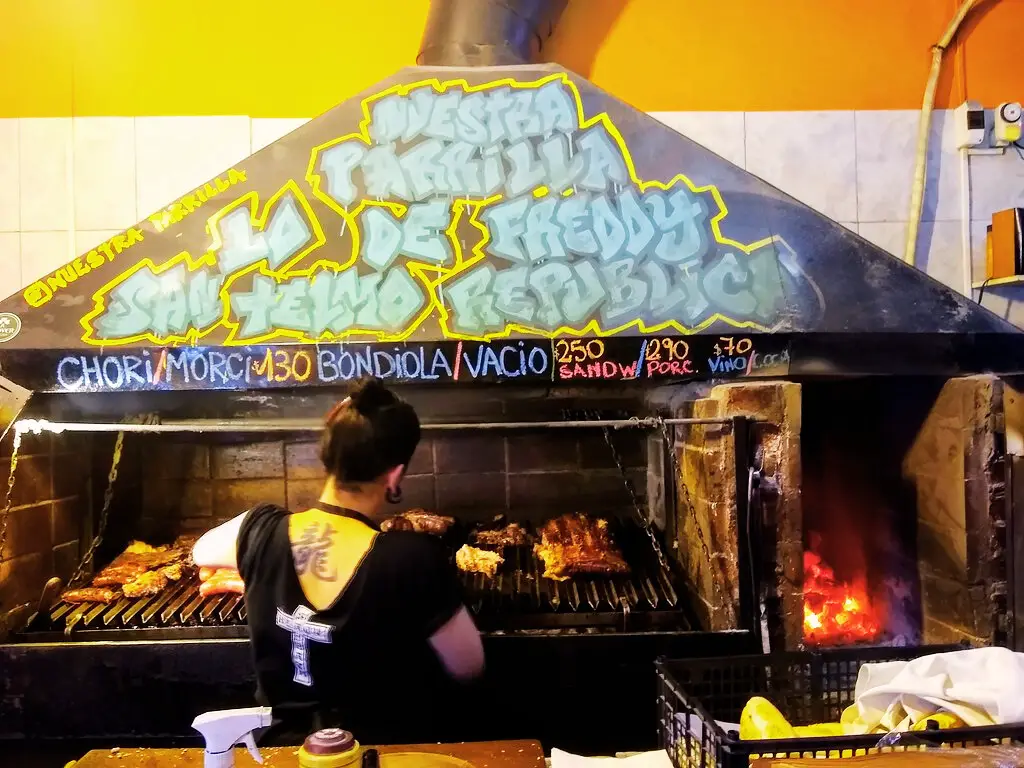
Located in San Telmo, this cozy grill serves authentic choripán with fresh bread and chimichurri. A classic choripán costs about 1,500 ARS.
El Ferroviario
A hidden gem for locals, this parrilla in Caballito offers affordable and delicious chorizo. A serving of grilled chorizo costs around 1,200 ARS.
How Chorizo Fits into Buenos Aires Life
Chorizo isn’t just a Buenos Aires food—it’s a tradition. Families grill chorizo during weekend asados, filling backyards with smoky aromas. It’s also a go-to street food. Vendors sell choripán near football stadiums, parks, and busy streets. Eating a choripán at a game or outdoor market feels like a rite of passage.
Chorizo’s simplicity makes it versatile. You can enjoy it alone, in a sandwich, or as part of a meat feast. Its bold flavor stands out, but it also pairs well with sauces like chimichurri or criolla (a mix of diced tomatoes, onions, and peppers).
Variations of Chorizo
Chorizo comes in several forms to suit different tastes
Traditional Chorizo
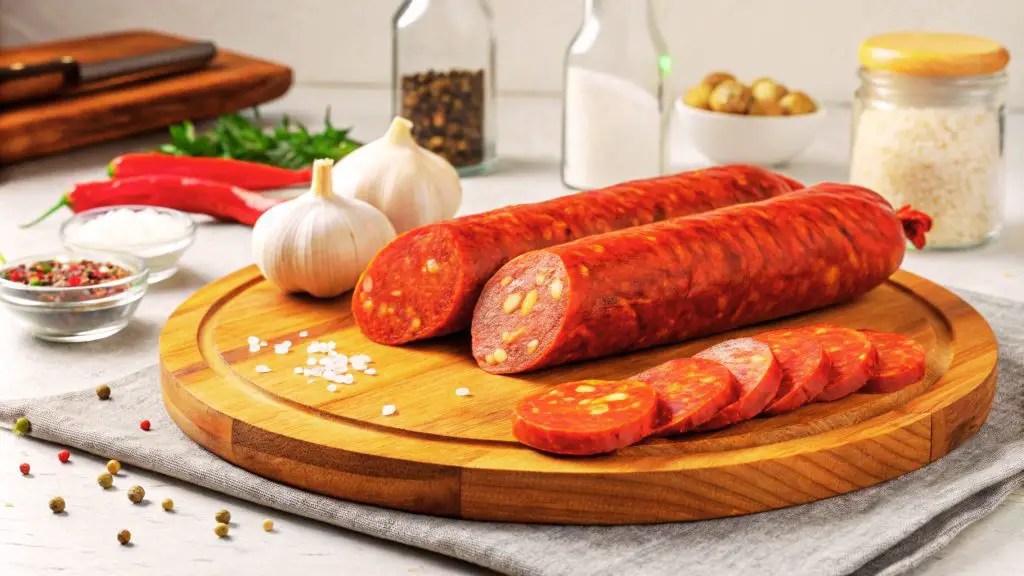
Made from pork, with a mix of garlic, paprika, and salt.
Chorizo Parrillero

This sausage is slightly longer and thinner, ideal for grilling
Spicy Chorizo
Includes chili or cayenne for those who love heat.
Morcilla
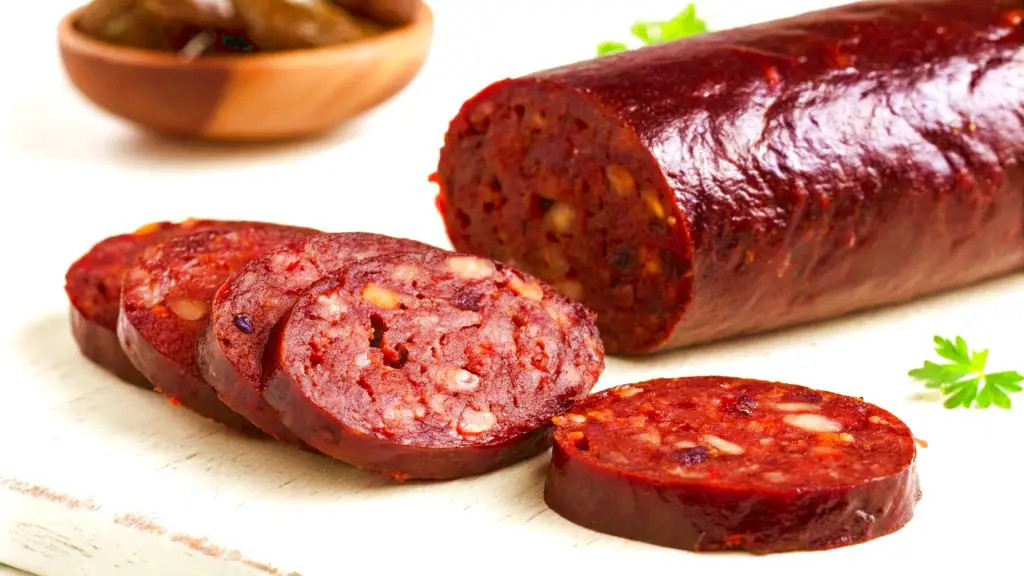
Often served alongside chorizo at asados, morcilla is blood sausage with a soft, rich texture
Veggie Options
Some restaurants in Buenos Aires now offer plant-based chorizo, seasoned with the same bold spices
Chorizo captures the heart of Argentina. Its bold flavors and smoky aroma bring people together, whether at a fancy steakhouse or a street-side grill. It’s a simple dish that carries a deep connection to the country’s culture and traditions. One bite, and you’ll understand why it’s a favorite across Argentina.
Locro: Buenos Aires’s Comforting Stew
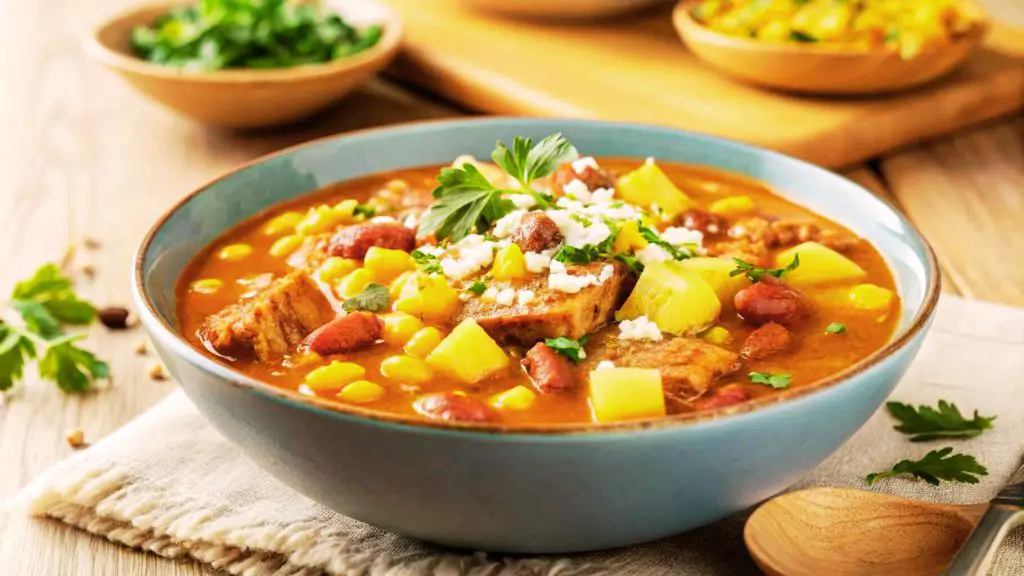
Locro is a hearty and traditional stew that holds a special place in Buenos Aires’s heart. It’s made with simple ingredients like corn, beans, potatoes, squash, and a mix of meats such as beef, pork, and chorizo. The flavors are rich and warming, making locro perfect for chilly days. This dish isn’t just Buenos Aires food , it’s part of Argentina’s soul.
Locro is most popular during national holidays like May 25th, Argentina’s Independence Day. Families gather to cook big pots of this delicious stew, sharing it as a symbol of unity and tradition. Its roots go back to the indigenous peoples of the Andes, making it a dish that connects the past to the present.
Why Locro Stands Out
Hearty and Filling : Locro is packed with protein and vegetables, making it a complete meal in one bowl
Rich Flavors : The slow cooking blends the flavors of the meat, spices, and vegetables perfectly
Comfort Food : Its thick, creamy texture feels like a warm hug, especially during cold weather.
Where to Try Locro in Buenos Aires
El Federal
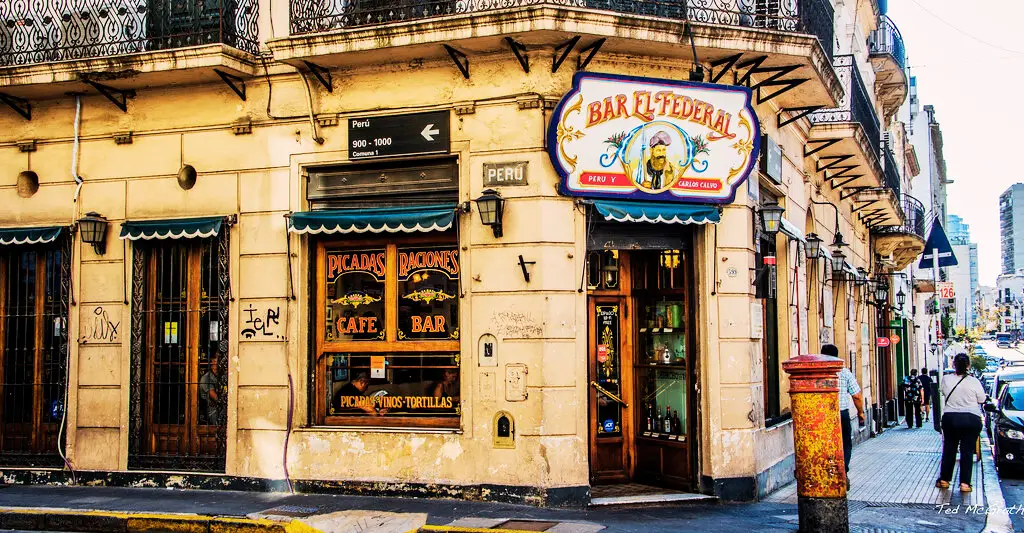
This historic restaurant in San Telmo serves an authentic locro with all the traditional ingredients. Their locro is rich and flavorful, priced around 3,500 ARS per serving.
Website: El Federal
Los Cardales Parrilla y Criolla
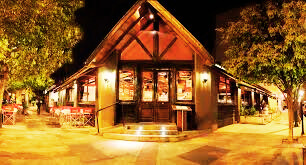
Known for hearty Argentine dishes, this parrilla in Palermo offers a homestyle locro. It’s served with fresh bread, costing approximately 3,000 ARS.
Na Serapia
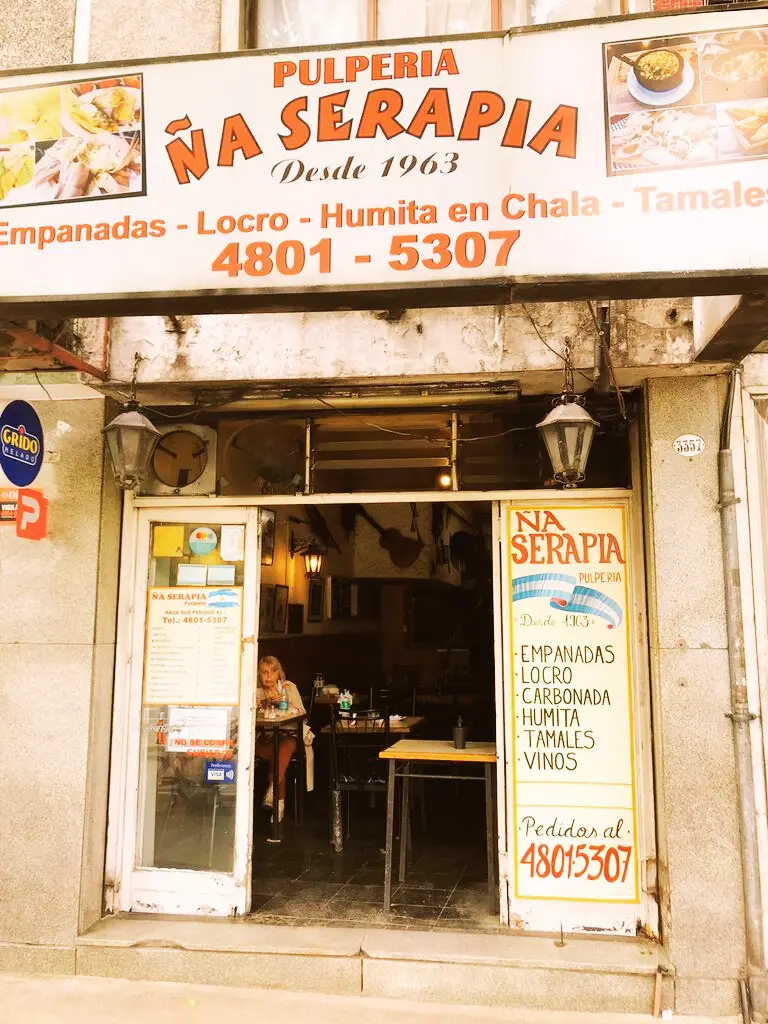
A cozy eatery in Recoleta specializing in northern Argentine cuisine. Their locro is cooked in the traditional Andean style, and a bowl costs about 2,800 ARS.
Website: Ña Serapia
La Cocina
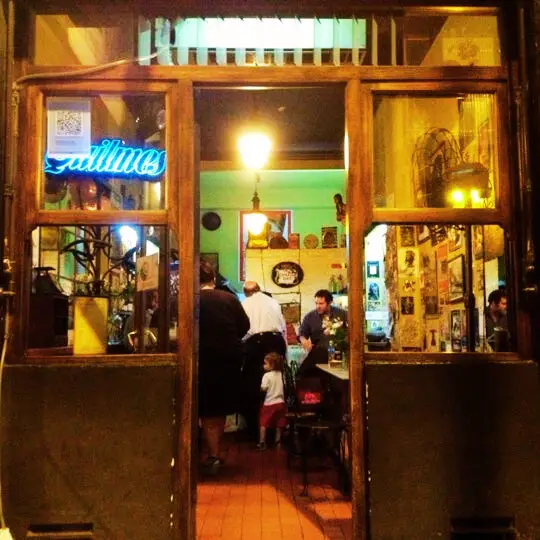
A small, family-run spot near Almagro where you can try affordable, delicious locro. Prices range from 2,000 ARS to 2,500 ARS per portion.
Locro in Buenos Aires Culture
Locro isn’t just a meal, it’s part of Argentina’s identity. It’s a dish that brings families and communities together, especially on national holidays. Preparing locro is often a group effort, with people chopping, stirring, and tasting throughout the day. The long cooking time allows everyone to share stories and connect.
It’s a dish that tells a story of resilience and simplicity. The ingredients reflect Argentina’s history, combining indigenous staples like corn and squash with the meats introduced by Spanish settlers. Eating locro feels like celebrating Argentina’s rich cultural heritage.
Variations of Locro
Locro can vary depending on the region or the cook
Traditional Locro
The classic version includes white corn, beans, squash, and a mix of beef and pork.
Vegetarian Locro

Some modern variations skip the meat, focusing on beans, squash, and potatoes for a lighter but equally hearty option.
Spicy Locro

Some recipes add chili or spicy sausage for an extra kick.
Garnished Locro

Many people top their locro with a salsa criolla, a tangy mix of onions, peppers, and vinegar, or a dollop of chimichurri sauce.
Locro is a dish that warms both the body and the heart, connecting people through its rich flavors and deep cultural roots. Whether you’re trying it for the first time or enjoying it on a festive day, locro is a meal that leaves a lasting impression
Alfajores: Argentina’s Sweet Delight
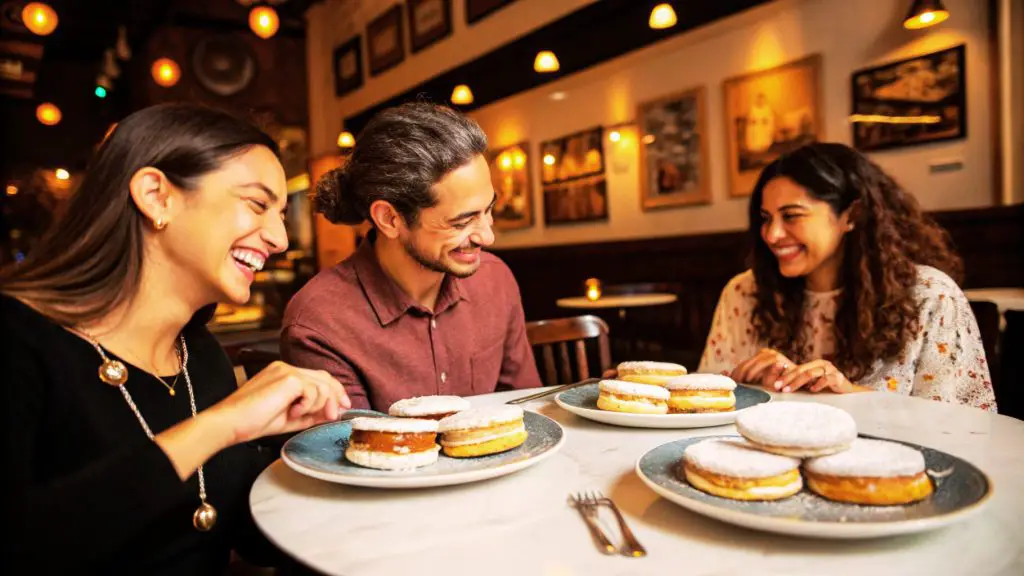
Alfajores are one of Argentina’s most loved sweets. These soft cookies, sandwiched together with a rich dulce de leche filling, are a treat that feels both luxurious and comforting. The cookies are buttery and tender, while the dulce de leche adds a smooth, caramel sweetness. Alfajores are often coated in powdered sugar, chocolate, or shredded coconut for extra indulgence.
In Argentina, alfajores are more than a dessert—they are a daily joy. People enjoy them as an afternoon snack with coffee or tea. Kids take them to school, and adults grab one as a quick treat on the go. They are a symbol of happiness and tradition, often shared during special moments or gifted to loved ones.
What Makes Alfajores Special?
Perfect Balance: The soft cookies and creamy dulce de leche create a combination that melts in your mouth
Endless Varieties: Alfajores come in many styles, from artisanal to mass-produced, giving everyone a chance to find their favorite
Cultural Connection: Eating alfajores feels like tasting a piece of Argentina’s heart.
Where to Find the Best Alfajores in Buenos Aires
Buenos Aires is the perfect city to explore alfajores. Here are some of the best spots
Havanna
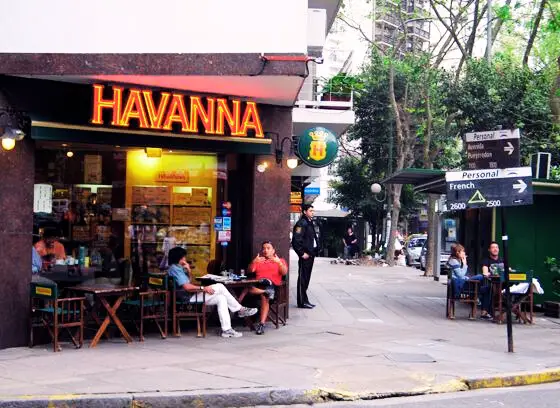
Havanna is the most famous alfajor brand in Argentina. Their classic chocolate-coated alfajores are iconic. A box of six costs around 4,500 ARS. You can visit their cafés across Buenos Aires to enjoy them fresh.
Website: Havanna
El Gato Negro
This historic café in the city center offers handmade alfajores with premium dulce de leche. Prices start at 800 ARS per piece.
Website: El Gato Negro
Rapa Nui
Known for artisanal chocolates, Rapa Nui also serves high-end alfajores. Their dulce de leche filling is creamy, and the cookies have a rich, buttery flavor. Prices range from 1,200 ARS to 2,000 ARS depending on the type.
Website: Rapa Nui
La Casa del Alfajor
Located in San Telmo, this shop specializes in traditional and creative alfajores. They offer a variety of coatings, fillings, and sizes. Prices start at 700 ARS for individual alfajores and 3,500 ARS for gift boxes.
They are often enjoyed during social moments, like sipping mate with friends or celebrating small victories. They’re also a popular gift, showing love and appreciation. During holidays, bakeries fill their shelves with festive alfajores, decorated with bright colors and extra toppings.
This treat dates back to Argentina’s colonial days, inspired by similar sweets from Spain. Over time, it evolved into a uniquely Argentine dessert. Today, alfajores are a part of daily life, connecting people through their irresistible flavors.
Variations of Alfajores
Classic Alfajores
Two soft cookies filled with dulce de leche, coated in powdered sugar or shredded coconut.
Chocolate-Covered Alfajores

A layer of milk or dark chocolate adds a luxurious twist.
Cornstarch Alfajores (Alfajores de Maicena)

These are delicate and crumbly, with a light texture that pairs perfectly with dulce de leche.
Artisanal Alfajores

Made by hand with premium ingredients, often featuring gourmet flavors like vanilla bean or dark cocoa.
Fruit-Filled Alfajores

Some variations swap dulce de leche for jams like quince or raspberry.
Mini Alfajores

Bite-sized versions that are perfect for sharing or enjoying on the go.
Whether you try a mass-produced classic or a handcrafted version from a boutique bakery, the joy of biting into an alfajor is unforgettable. It’s a treat that combines simple ingredients with deep traditions, leaving you craving another bite.
Milanesa : Buenos Aires’s Comfort Food
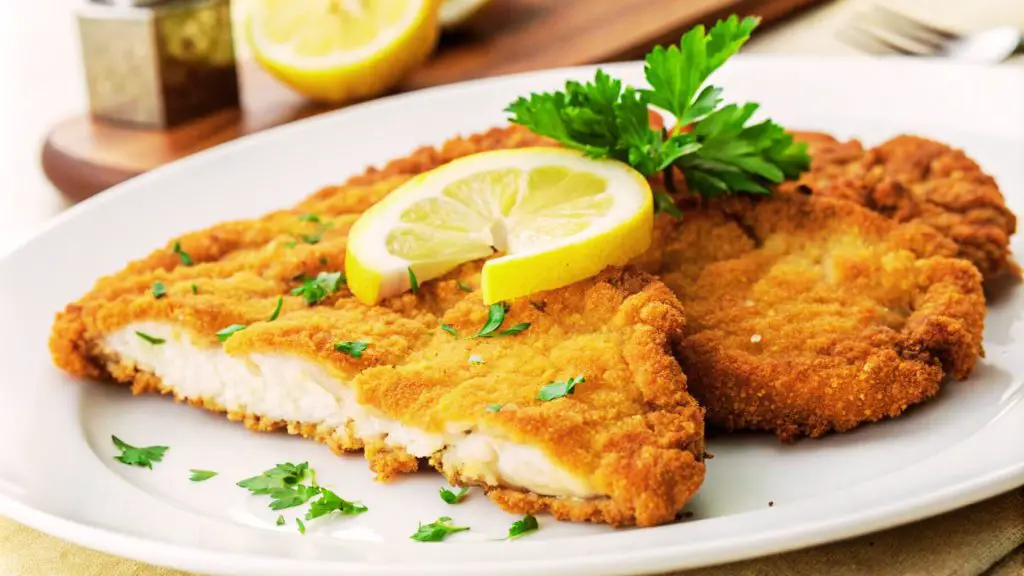
Milanesa is one of Buenos Aires’s most loved dishes. It’s a thin slice of meat, usually beef or chicken, coated in breadcrumbs and fried until crispy and golden. It’s simple but packed with flavor. Often served with fries, mashed potatoes, or a fresh salad, milanesa is a comforting meal that you can enjoy any time of day.
This dish is part of Buenos Aires’s everyday life. Families cook it for dinner, kids eat it at school, and restaurants include it as a staple on their menus. Its origins trace back to European immigrants, especially Italians, who brought the idea of breaded meat to Argentina. Over time, it became a beloved Benos Aires food.
What Makes Milanesa Special?
Crispy Outside, Juicy Inside : The crunchy breadcrumb coating locks in the meat’s natural juices, giving it the perfect texture
Versatile Dish : Milanesa can be made with beef, chicken, pork, or even eggplant for vegetarians
Comfort on a Plate : Its rich, satisfying taste makes it a go-to meal for all occasions
Where to Try Milanesa in Buenos Aires
Buenos Aires is the perfect place to enjoy authentic milanesa. Here are some top spots to visit
El Club de la Milanesa
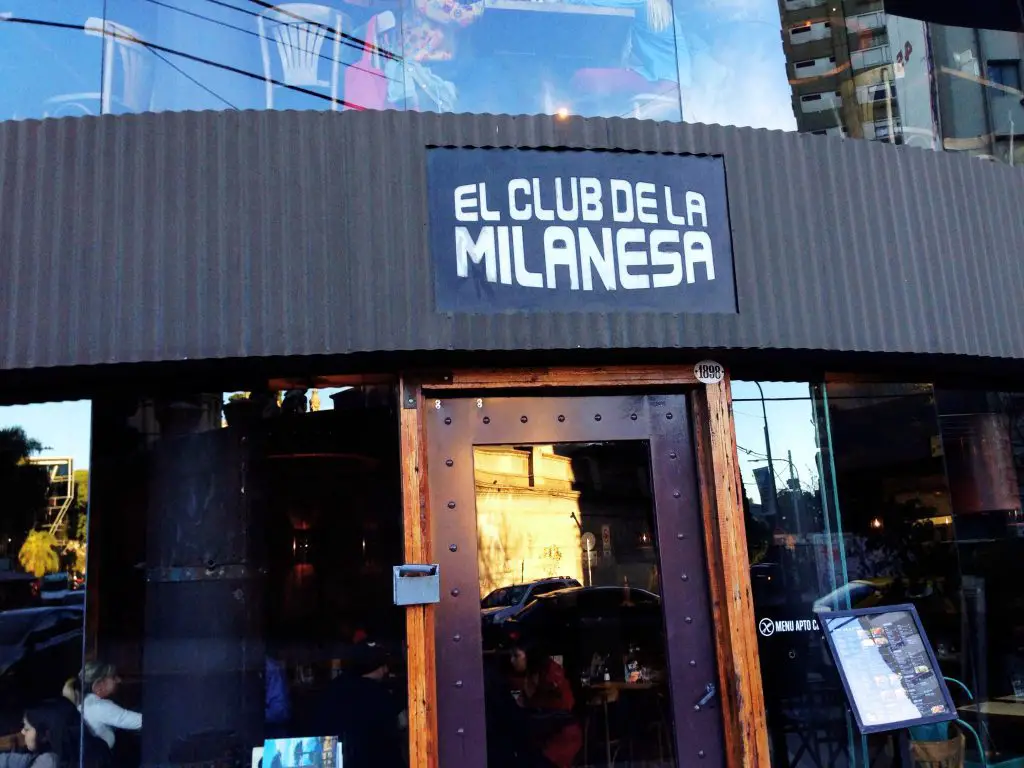
This restaurant specializes in creative variations of milanesa. You can try it with toppings like cheese, tomato sauce, or ham. A classic milanesa with fries costs around 3,500 ARS.
Website: El Club de la Milanesa
El Antojo
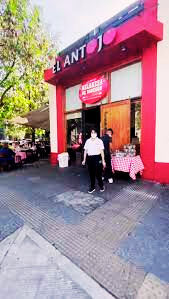
A local favorite in Villa Crespo, this spot serves traditional milanesa at affordable prices. A serving with salad or fries starts at 2,500 ARS.
El Preferido de Palermo
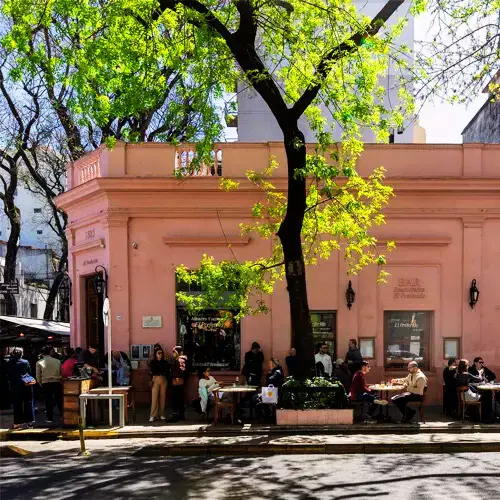
Known for its gourmet approach to traditional dishes, their milanesa is tender and perfectly seasoned. Prices range from 3,800 ARS to 4,500 ARS.
Website: El Preferido de Palermo
Parrilla Pena
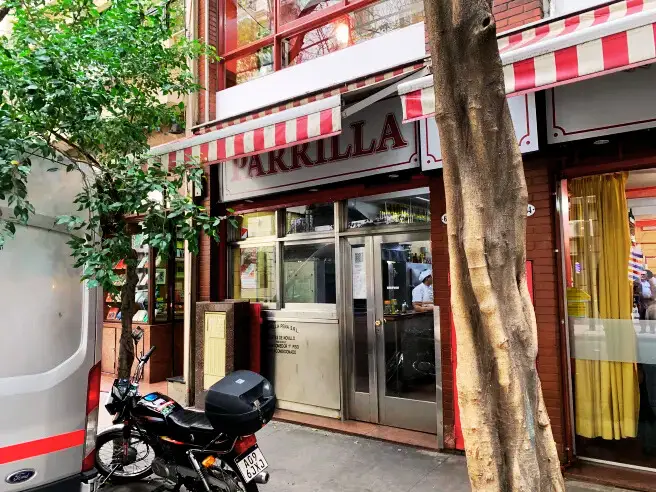
A classic parrilla offering hearty portions. Their milanesa with mashed potatoes is a must-try, priced around 3,000 ARS.
It’s also common to pack milanesa sandwiches for picnics, road trips, or work lunches. People of all ages love it, from kids to grandparents.
Every household in Buenos Aires has its version of the dish. Some fry it until super crispy, while others bake it for a lighter touch. It’s often topped with a squeeze of lemon for extra flavor or paired with homemade sauces like chimichurri.
Variations of Milanesa
Milanesa Clásica
The traditional version with beef or chicken, fried and served with fries or salad.
Milanesa Napolitana

Topped with tomato sauce, ham, and melted cheese, similar to a pizza.
Milanesa de Pollo

Made with chicken instead of beef, offering a lighter taste.
Milanesa de Cerdo

Pork is another popular option, especially for those who enjoy a slightly richer flavor.
Milanesa de Berenjena

A vegetarian version made with eggplant, breaded and fried.
Gourmet Milanesa

Some restaurants add unique toppings like arugula, sun-dried tomatoes, or gourmet cheeses.
It’s a versatile meal that reflects Buenos Aires’s culinary heritage, blending European traditions with local flavors. One bite, and you’ll understand why it’s a favorite across the country.
Fernet Branca: Buenos Aires’s Bitter Love
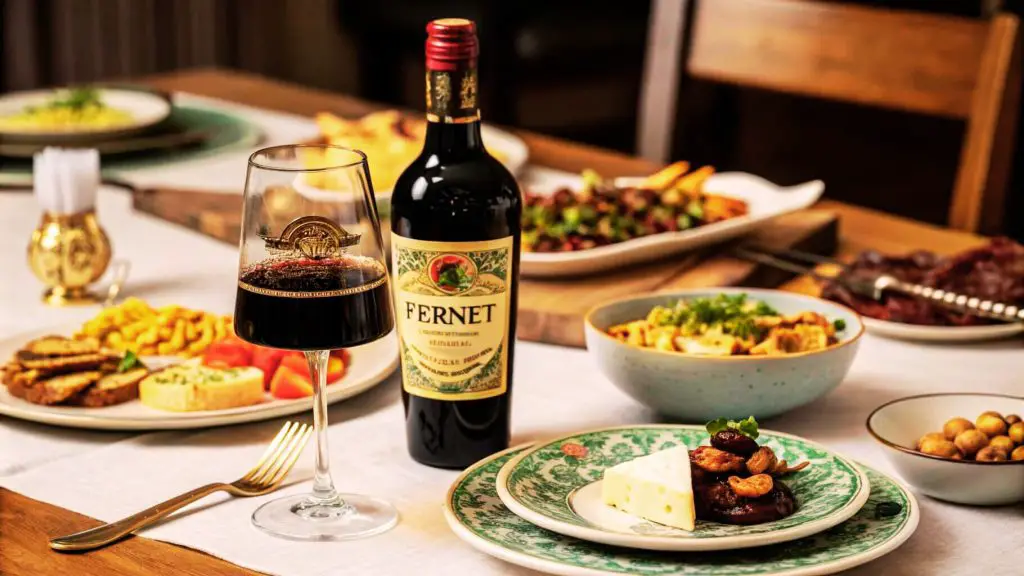
Fernet Branca is a strong, bitter liqueur with a unique flavor that Argentinians love. Originally from Italy, this herbal drink is made from a blend of over 27 spices and herbs. Its dark, intense taste is both complex and bold. While it may not appeal to everyone at first, many people grow to adore its distinctive flavor.
In Argentina, Fernet Branca is much more than a drink. It’s a cultural symbol. It’s most commonly mixed with cola, creating a refreshing and slightly bitter cocktail simply called Fernet con Coca. Whether at a barbecue, a party, or a casual gathering with friends, Fernet is a must-have.
What Makes Fernet Special?
Herbal Intensity: Its taste is bold and unique, combining bitter, spicy, and herbal notes
Perfect Pairing with Cola: The bitterness of Fernet blends perfectly with the sweetness of cola, creating a balanced and refreshing drink
Rich History: It has roots in Italian immigrant culture but has become one of Argentina’s favorite beverages.
Where to Try Fernet Branca in Buenos Aires
La Poesía
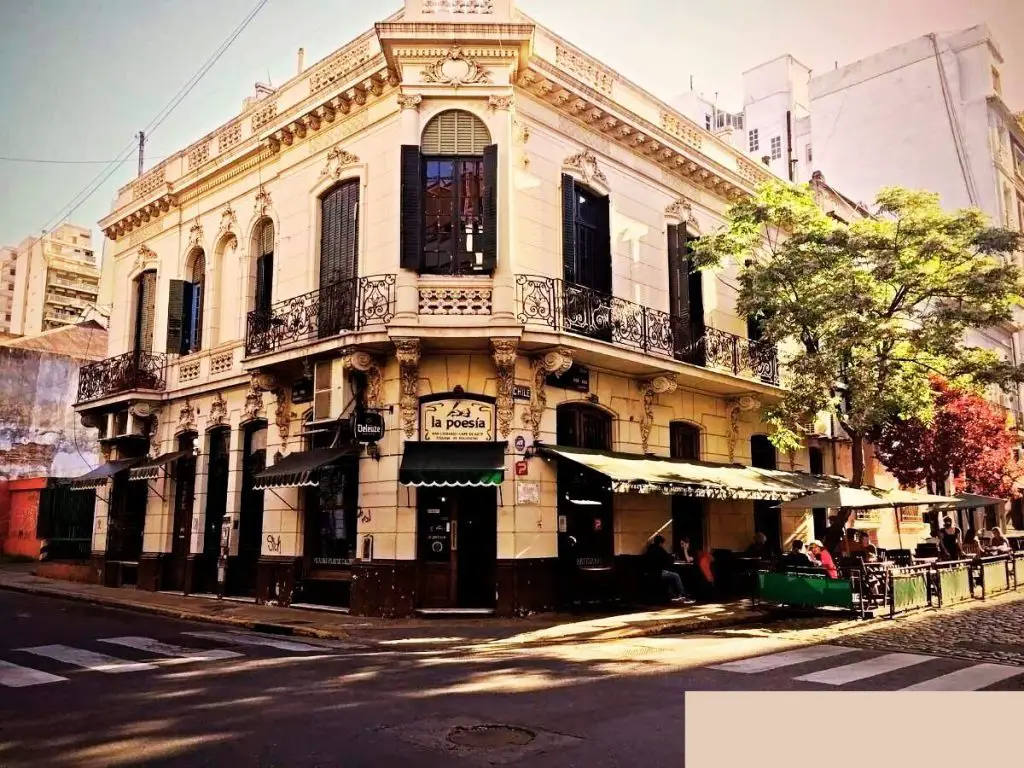
This charming café-bar in San Telmo serves a classic Fernet con Coca in a relaxed, traditional setting. A glass costs around 1,500 ARS.
Website: La Poesía
878 Bar
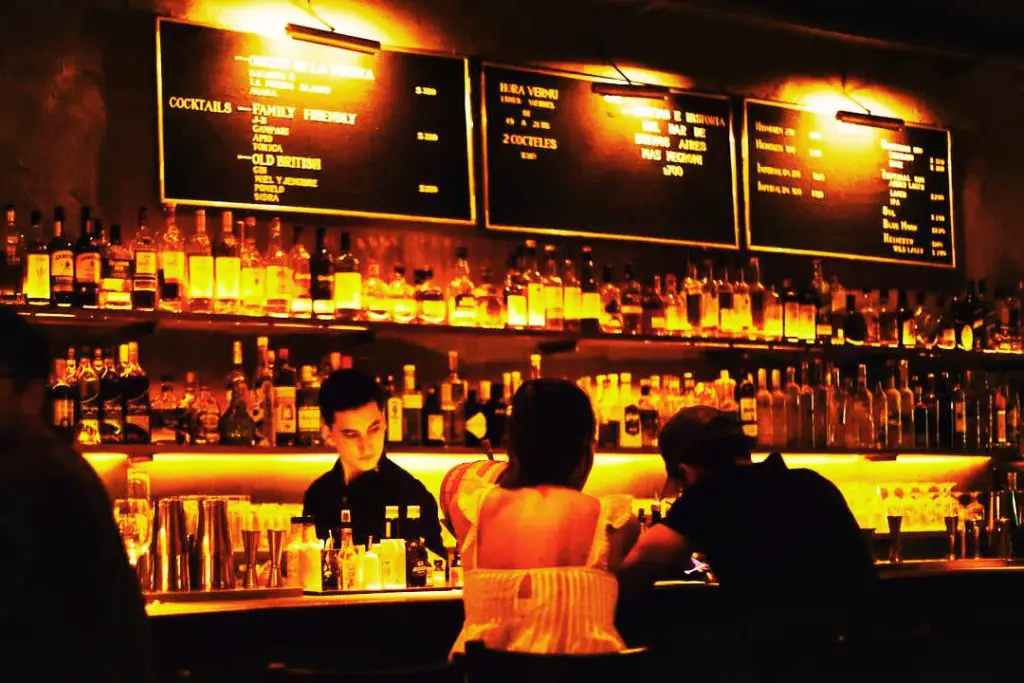
A trendy spot in Palermo, known for its artisanal cocktails. They offer Fernet con Coca and creative variations using Fernet. Prices range from 2,000 ARS to 3,000 ARS.
Website: 878 Bar
El Taller
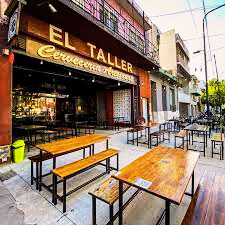
A laid-back bar in Recoleta, perfect for enjoying a chilled Fernet drink after a long day. A classic Fernet con Coca costs about 1,800 ARS.
Bar Federal
Located in San Telmo, this historic bar serves Fernet con Coca as part of its rustic and authentic Argentine menu. Prices are around 1,600 ARS.
Fernet’s Role in Buenos Aires Culture
Fernet Branca has a special place in Buenos Aires’s social life. It’s a drink that brings people together. At parties and gatherings, someone always prepares a big jug of Fernet con Coca to share. It’s also a popular choice at asados (barbecues), where it pairs perfectly with grilled meats.
The drink became popular in the 20th century, thanks to Italian immigrants who introduced it. Over time, it transformed from a digestif to a social drink. Today, Argentina is the largest consumer of Fernet Branca in the world. It’s a symbol of togetherness and celebration.
Variations of Fernet Branca
Fernet con Coca : The classic mix of Fernet and cola, served with plenty of ice.

Fernet with Soda : For a lighter option, Fernet is mixed with soda water instead of cola.
Fernet Spritz : A more modern version, combining Fernet with sparkling wine and a twist of orange.

Fernet Shots : While less common, some people drink it straight as a bold shot.

Fernet Cocktails : Trendy bars often use Fernet in creative cocktails, adding flavors like citrus or ginger to balance the bitterness.

Its bitterness might surprise you at first, but it’s a flavor that grows on you. When mixed with cola, it transforms into a refreshing drink that’s both unique and familiar. Whether you’re sipping it in a bustling Buenos Aires bar or sharing it with friends at a barbecue, Fernet Branca captures the essence of Argentine social life. Give it a try, and you might just discover why it’s a national favorite.
